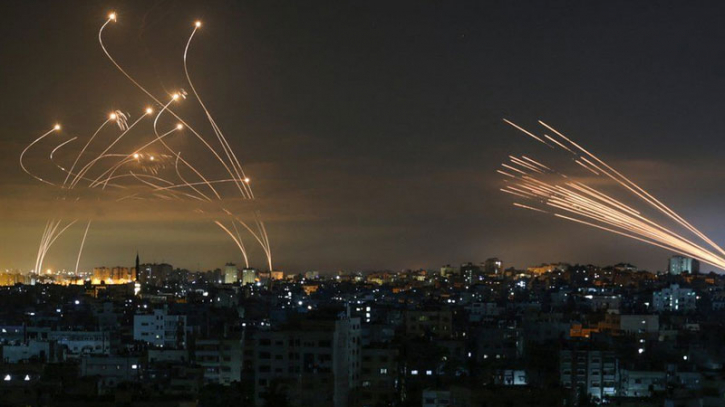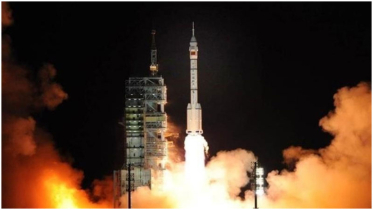Iron Dome's ‘Inefficiency' revealed by Israeli-Palestinian conflict escalation

The massive attack launched by Hamas militants against Israel on October 7 was accompanied by a series of rocket launches, many of which managed to bypass Israeli defenses and hit their targets, news agency Sputnik reports.
Israel’s Iron Dome air defense system is widely regarded as one of the best in the world. That said, it apparently failed to completely negate the Palestinian rocket barrage on Saturday.
Commenting on this failure, Russian military historian and Museum of Air Defense Forces’ Director Yuri Knutov pointed out that while Iron Dome is a very advanced and sophisticated air defense system, it has drawbacks that can be exploited by any enemy.
For one, a single Iron Dome battery can protect a relatively small area (about 150 square kilometers).
Secondly, Knutov noted, Iron Dome is extremely effective when dealing with a small number of incoming targets all of which approach from the same direction.
“In case of a more intensive barrage, involving at least about 100 rockets, the Iron Dome usually fails to do its job and up to 90% of the rockets bypasses it and strike the intended targets,” he claimed.
The historian also observed that Hamas militants deliberately launched mass rocket salvos from different directions, apparently in order to overwhelm the Israeli Iron Dome defenses.
“When it (an Iron Dome system) intercepts the first salvo, when it is dealing with those rockets, it is unable to deal with the second salvo that was fired practically a minute after the first one. And so the rockets from the second, third and fourth salvos reach their targets practically unopposed,” he said, arguing that this tactic essentially capitalizes on Iron Dome’s “inefficiency.”
Furthermore, a single Iron Dome interceptor missile costs at least $20,000 while Palestinian jury-rigged rockets – the threat Iron Dome systems usually have to deal with – cost only about $2,000-$3,000 apiece, Knutov added.
Knutov did, however, praise the Iron Dome’s radar unit capabilities and the interceptor missiles this air defense system uses, describing both of them as quite “interesting.”
He also noted that Iron Dome can determine whether an incoming missile poses a threat to a populated area or a military facility and refrain from wasting ammo on a projectile that would otherwise crash in a deserted area.
What does Iron Dome do?
Iron Dome is an Israeli-made air defense system designed to intercept and destroy ballistic missiles and artillery shells fired from distances of 4 to 70 kilometers.
Developed during the late 2000s by Israeli defense contractor Rafael Advanced Defense Systems, the Iron Dome was first deployed in 2011 and has since been actively used by IDF to counter rocket strikes conducted by Palestinian militants.
An Iron Dome battery typically consists of several launcher units (the payload of each consists of 20 interceptor missiles), a radar unit and a control unit.
One of the Iron Dome’s distinct features is its ability to evaluate incoming threats and ignore missiles and rockets projected to land in empty areas, thus not conserving its payload.
Israeli Intelligence Services' Failure & Merkava Fiasco
According to Knutov, the fact that Hamas militants managed to prepare thousands of rockets for this attack in secret, not to mention train all those militant squads that launched incursions into Israeli territory on October 7, effectively means that Israel’s intelligence agencies failed to do their job properly.
Meanwhile, Hamas militants displayed what looks like special operations tactics, with teams of militants using paragliders and executing amphibious landings in order to bypass Israeli forces and storm Israeli military bases, Knutov said.
He also described reports about an Israeli Merkava main battle tank, “which was portrayed as the best tank of in the world and which was equipped with Trophy active protection system and with dynamic protection,” being disabled by a Palestinian militant armed with a fairly antiquated anti-tank weapon as surprising.
“The first tank was taken out with an old RPG-7 grenade launcher loaded with a shaped charge that punched straight through the tank’s frontal armor,” he said.
The fact that neither the vaunted Trophy system nor Merkava’s armor and dynamic protection managed to save the tank from destruction essentially means that all of them are not as good as advertised, to put it mildly, Knutov suggested.
.png)




